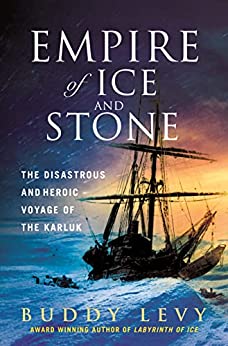More on this book
Community
Kindle Notes & Highlights
by
Buddy Levy
Read between
December 23, 2022 - February 13, 2023
982 Erik the Red explores Greenland and becomes its first permanent settler. 1497 John Cabot explores the Grand Banks fishing grounds off Labrador and Newfoundland and claims the territory for England. 1594–97 Willem Barents searches for the Northeast Passage, wintering over at Novaya Zemlya in 1596–97. 1610–11 Henry Hudson searches for the Northwest Passage, wintering at Hudson Bay. His crew mutinies, setting Hudson adrift along with his son and seven men. They are never seen again. 1670 Hudson’s Bay Company is founded. 1778 Captain James Cook attempts a maritime route through the Arctic to
...more
This highlight has been truncated due to consecutive passage length restrictions.
karluk is an Aleutian word for “fish.”
It was true, he explained, that new ice or “young ice” had brine trapped in the crystals and was too salty to drink. But as ice ages, the brine leaches out of it, and older, multiyear ice was absolutely fresh and drinkable.
There were two prevailing philosophies for ice navigation: the Atlantic theory and the Alaska or Beaufort Sea theory. The bolder Atlantic theory held that the farther away from land you stayed, the better your chance of finding more open, scattered ice. The downside was that if you were iced in, you were much farther from land. The more cautious Beaufort Sea approach was to hug the coast, staying along the shore if you could, “and if you don’t get there this year you may have another chance the next.”
There is nothing more human than a ship in ice pressure.”
Bartlett had learned his lesson during the night in the tent, so with Kataktovik and McKinlay, they started building an igloo. The process involved first finding a relatively level spot and preferably on heavy, sturdy ice that appeared unlikely to fracture, though this proved impossible to predict, and often there wasn’t much time at the end of the day in the dying light. They had to work fast. Using long-bladed snow knives as well as handsaws, they cut large blocks of snow and stacked them in a square shape for the lower walls, tapering them in smaller sizes up to the roof. The blocks would
...more


